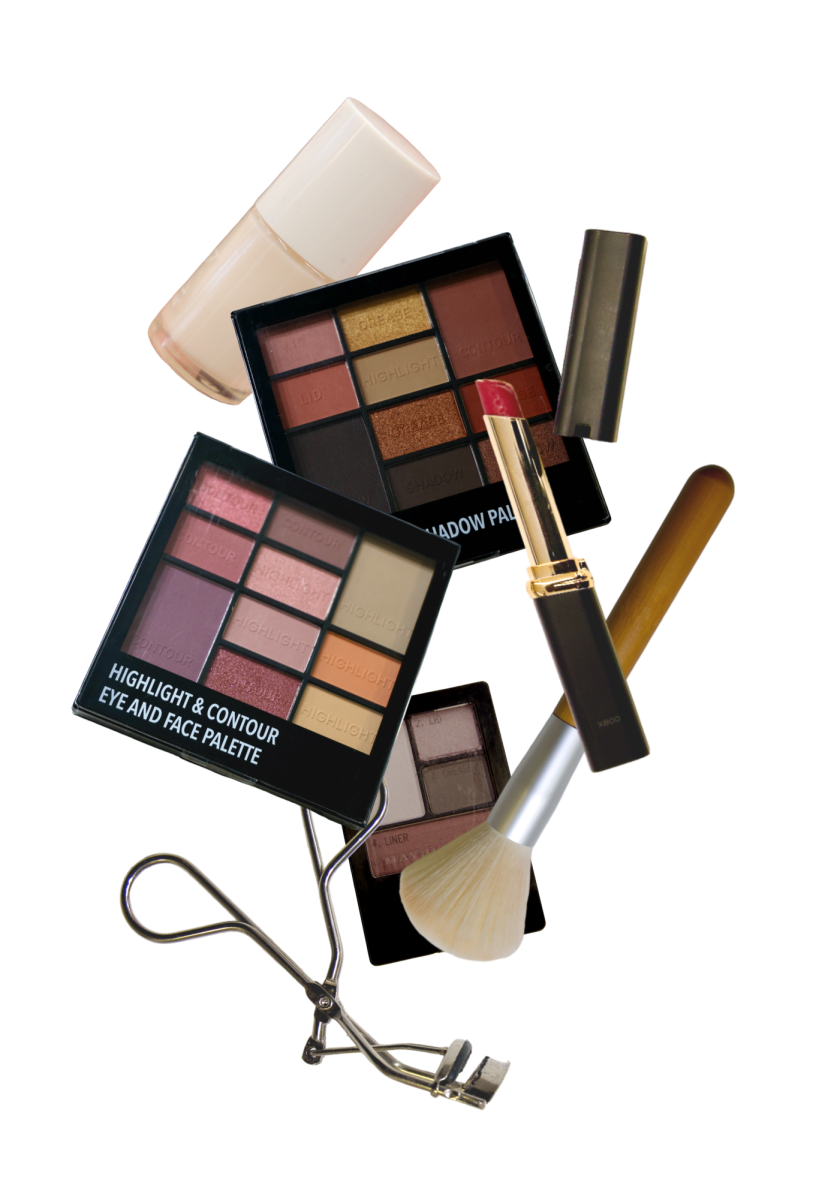As tiny microbeads pass through water filtration systems and pollute the environment daily, there is no end to the plastic and chemical contamination caused by makeup waste. Zero Waste Week research found that plastic packaging waste from the beauty industry reaches over 120 billion units of packaging annually. At SCHS, cosmetics are often thrown out at a rapid pace while students apply makeup before class.
Junior Isabel Abrigo believes makeup waste is caused by the customer’s reaction to the product after they buy it, as they figure out how it reacts with their skin. While a new product could seem exciting and innovative at first, she believes products are thrown out prematurely due to the customer’s poor understanding of their skin type in accordance with the purpose of the cosmetic product.
“If I buy something I think it’s going to work well but the colors and the tone are completely off, I’ll throw it away,” Abrigo said. “Or sometimes you go to a drugstore and you’ll get something that’s cute, but it makes you break out really bad.”
English teacher Laura Adauto admitted to collecting unnecessary amounts of makeup and struggles to get rid of expired products. As a result, she sees an issue with hoarding justified by the increased price of the cosmetic market, allowing other consumers like herself to waste products that collect dust on shelves.
“When you’re talking about waste, it’s mostly because of expiration dates, and I tend to hoard the products and say, ‘But I bought it, and I spent a lot of money on it.’ At some point, you just have to let it go because it’s old,” Adauto said.
According to freshman Aeisha Agarwal, consumers are deceived by the cute and aesthetically pleasing makeup packaging that gets promoted online. Consequently, she believes individuals do not pay enough attention to the quality of the product itself and throw it out within only a few uses.
“I feel like so many people buy makeup just because of the pretty packaging, or because they saw it on social media but ended up not liking it and throwing it away,” Agarwal said.
Additionally, Adauto believes consumers are too preoccupied with how a product looks on an influencer or celebrity and do not consider how different it will look on themselves. Since online content is usually edited to remove blemishes and even out skin tone, she has noticed that people become disappointed when the product does not come with a filter in real life. Adauto believes that influencer culture makes it even harder to use an entire makeup product before throwing it out and finding something that works better.
“You get caught up in seeing how it works on somebody else. Then that shade didn’t work, so you buy another one, but then you end up not keeping it because your lifestyle changes,” Adauto said.
Agarwal advocates against makeup waste and sees a greater benefit to using makeup to its full potential even if it did not satisfy her expectations. She believes there are more ways to use makeup sustainably that do not inconvenience the consumer exponentially. As inflation and the popularization of high-end products have made makeup almost a luxury in terms of price, Agarwal finds it financially damaging to waste them.
“Even when I buy a makeup product and end up not liking it, I keep it rather than throwing it out,” Agarwal said. “Since I spent all that money on the product, I’d rather return it instead.”
Whilst plastic and non-recyclable packaging is a main contributor to makeup waste, Agarwal believes that biodegradable materials should become more universal to reduce the number of parabens, microplastics and polymers causing damage to the environment.
“I definitely think that biodegradable materials should be used to package makeup products since it is much more environmentally friendly and would reduce the amount of makeup packaging in the landfill,” Agarwal said.
Junior Tanmayee Atmakuri believes that makeup consumers can find their own ways to prevent cosmetics from expiring before they are fully used. She noticed that many people do not pay attention to expiration dates, so by creating an organized system to prevent makeup waste consumers can use their products more effectively.
“Maybe looking closely into the expiration dates and using it before it expires, or organizing whatever makeup you have – seeing all the expiration dates that are closer to the month and putting them in a spot and putting all the ones that are farther away from expiring somewhere else so you know which products to use first,” Atmakuri said.


